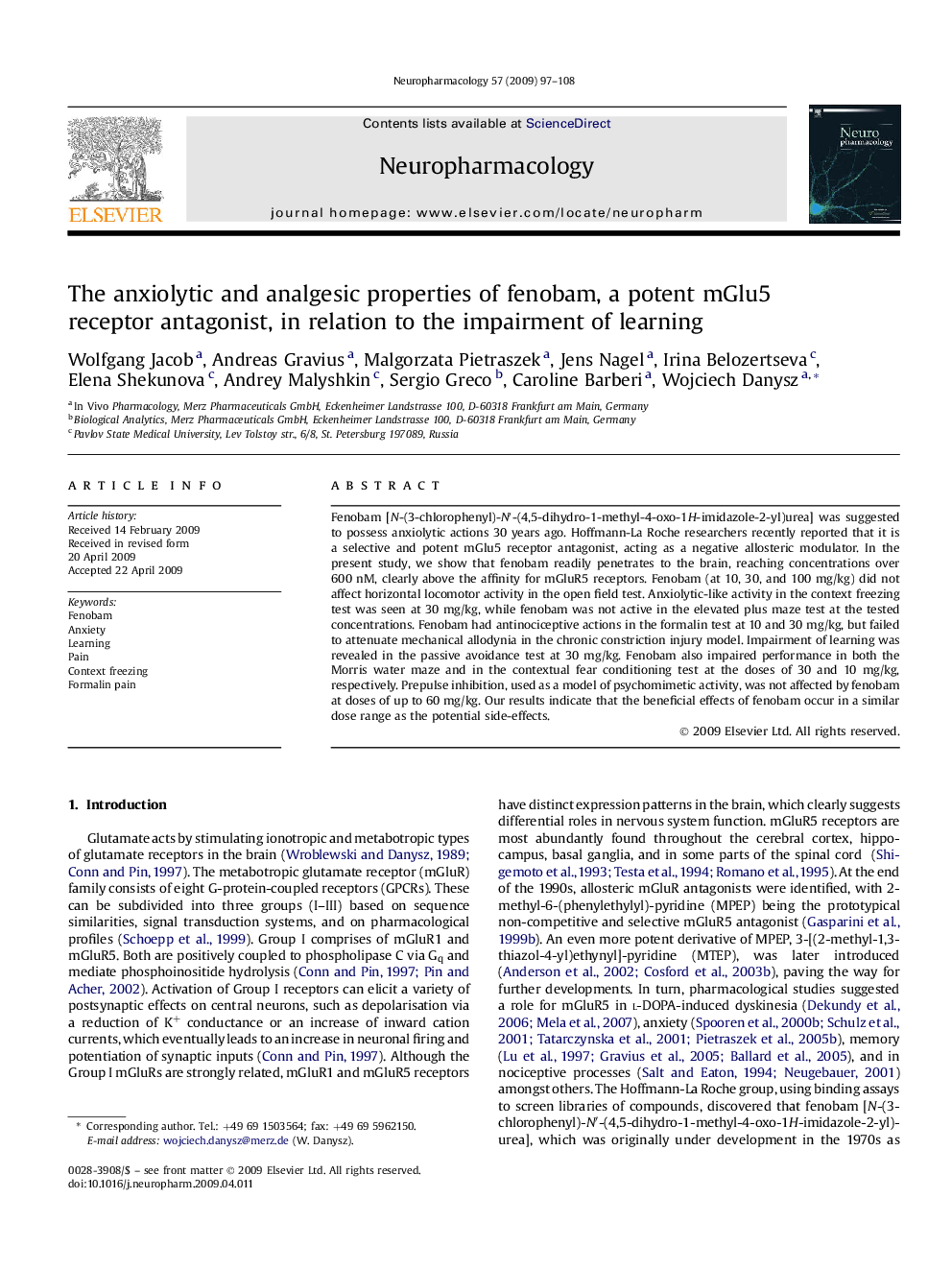| Article ID | Journal | Published Year | Pages | File Type |
|---|---|---|---|---|
| 2494280 | Neuropharmacology | 2009 | 12 Pages |
Fenobam [N-(3-chlorophenyl)-N′-(4,5-dihydro-1-methyl-4-oxo-1H-imidazole-2-yl)urea] was suggested to possess anxiolytic actions 30 years ago. Hoffmann-La Roche researchers recently reported that it is a selective and potent mGlu5 receptor antagonist, acting as a negative allosteric modulator. In the present study, we show that fenobam readily penetrates to the brain, reaching concentrations over 600 nM, clearly above the affinity for mGluR5 receptors. Fenobam (at 10, 30, and 100 mg/kg) did not affect horizontal locomotor activity in the open field test. Anxiolytic-like activity in the context freezing test was seen at 30 mg/kg, while fenobam was not active in the elevated plus maze test at the tested concentrations. Fenobam had antinociceptive actions in the formalin test at 10 and 30 mg/kg, but failed to attenuate mechanical allodynia in the chronic constriction injury model. Impairment of learning was revealed in the passive avoidance test at 30 mg/kg. Fenobam also impaired performance in both the Morris water maze and in the contextual fear conditioning test at the doses of 30 and 10 mg/kg, respectively. Prepulse inhibition, used as a model of psychomimetic activity, was not affected by fenobam at doses of up to 60 mg/kg. Our results indicate that the beneficial effects of fenobam occur in a similar dose range as the potential side-effects.
